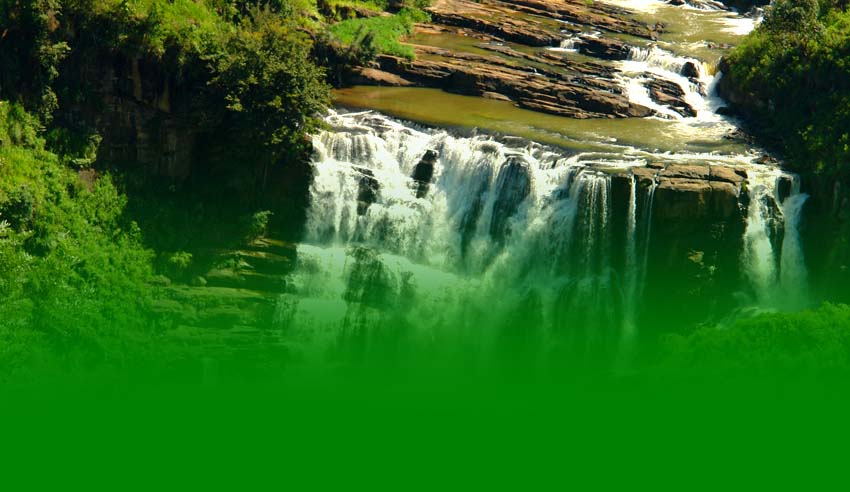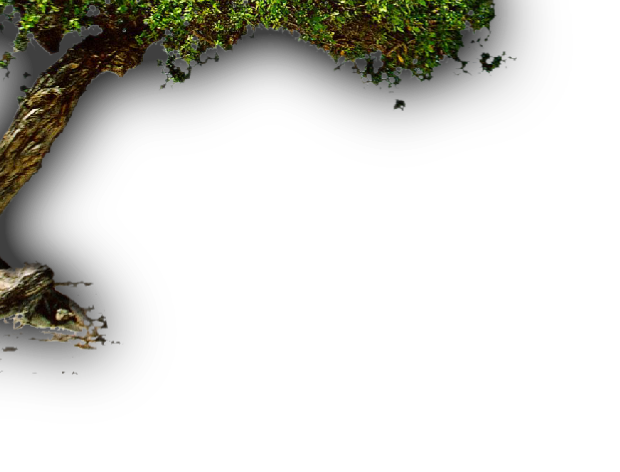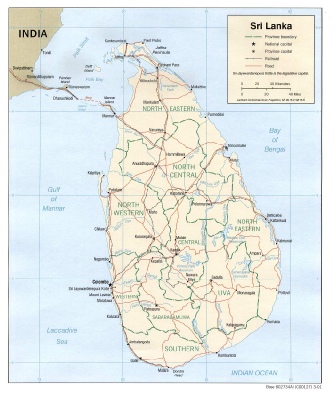





 Sri Lanka Facts
Sri Lanka Facts



"To me the beauty of Ceylon lies not so much in its blue seas and golden beaches, its jungles and its mountain peaks, as in its ancient atmosphere. There is no nation, from Egypt of the Pharaohs to modern Britian, in whose literature this island has not at some time been mentioned by one or other of its many names -- Lanka, Serendib, Taprobane, Cellao, Zellan, to recall a few. History lies buried in its sands, and ghosts of romance lurk among its bastioned rocks, for Lanka is very, very old."
- D. J. G. Hennessy, GREEN AISLES,1949
SRI LANKA
Overview
Sri Lanka has been described as a tropical paradise by various authors in various times over the past centuries. This should not surprise anyone because it has everything that qualifies it to be one of the best tourist destinations on the globe, such as beautiful coast line with sandy beaches, sun, cool mountains, forests teeming with wildlife, ancient dagobas and lakes in magnificent archaeological sites, gemstones, and above all very friendly and accommodating people. Coalesce these with well educated, English conversant people, a smooth tourist infrastructure and you have a superlative tropical island destination.
Sri Lanka is famous for the production and export of Tea, Coconut, Rubber and Cinnamon, which is native to the country. The natural beauty of Sri Lanka has led to the title The Pearl of the Indian Ocean. The island is laden with lush tropical forests, white beaches and diverse landscapes with rich biodiversity. The country lays claim to a long and colorful history of over three thousand years, having one of the longest documented histories in the world. Sri Lanka's rich culture can be attributed to the many different communities on the island.
Physically,Sri Lanka is a tear-drop shaped island which is located 880 kilometers (547 miles) north of the equator in the Indian Ocean, to the southwest of the Bay of Bengal. It lies between latitudes 5˚ and 10˚N, and longitudes 79˚and 82˚E. It is separated from the Indian peninsula by the Gulf of Mannar and the Palk Strait, the width of the narrowest stretch of water being 32 km. It has a maximum length of 432 kilometers (268 miles) and a maximum width of 224 kilometers (139 miles). The island has an area of 65,610 square kilometers (25,332 square miles) and a total coastline of 1,700 kilometers (1,056 miles). It is about twice the size of Belgium or a third larger than Switzerland. It enjoys fine sandy beaches almost all around the island, while the strip from the west coast to the south with its sandy bays and delightful coves is developed heavily for beach based tourism.
The climate of Sri Lanka can be described as tropical and warm. Its position between 5 and 10 north latitude endows the country with a warm climate moderated by ocean winds and considerable moisture. The mean temperature ranges from about 16 °C (60.8 °F) in the Central Highlands, where frost may occur for several days in the winter, to a maximum of approximately 33˚C (91.4˚F) in other low-altitude areas. The average yearly temperature ranges from 28˚C (82.4˚F) to nearly 31˚C (87.8˚F). Day and night temperatures may vary by 4˚C (7.20˚F) to 7˚C (12.60˚F). During the coldest days of January, many people wear coats and sweaters in the highlands and elsewhere.
May, the hottest period, precedes the summer monsoon rains. The rainfall pattern is influenced by monsoon winds from the Indian Ocean and Bay of Bengal: as the winds encounter the mountain slopes of the Central Highlands, they unload heavy rains on the slopes and the southwestern areas of the island. Some of the windward slopes receive up to 2,500 millimeters (98.4 in) of rain each month, but the leeward slopes in the east and northeast receive little rain. Periodic squalls occur and sometimes tropical cyclones bring overcast skies and rains to the southwest, northeast, and eastern parts of the island. Between December and March, monsoon winds come from the northeast, bringing moisture from the Bay of Bengal. Humidity is typically higher in the southwest and mountainous areas and depends on the seasonal patterns of rainfall, and places like Colombo experience daytime humidity above 70% all year round, rising to almost 90% during the monsoon season in June. Anuradhapura experiences a daytime low of 60% during the monsoon month of March, but a high of 79% during the November and December rains. In the highlands, Kandy's daytime humidity usually ranges between 70% and 79%.
Links
Surfbirds.com
Camacdonald.com
Birdquest.co.uk
Naturalist.co.uk
Birdquest.co.uk
Zootherabirding.com
Orientalbirdclub.org
Sundaytimes.lk
Naturalist.co.uk
Fatbirder.com
Limosaholidays.co.uk
Birdtours.co.uk
My-srilankaholidays
Birdtours
Surf Birdtours
Camacdonald.com
Birdquest.co.uk
Birdtours
Naturalist.co.uk
zootherabirding.com
orientalbirdclub.org
sundaytimes.lk
naturalist.co.uk
fatbirder.com
limosaholidays.co.uk
my-srilankaholidays.com